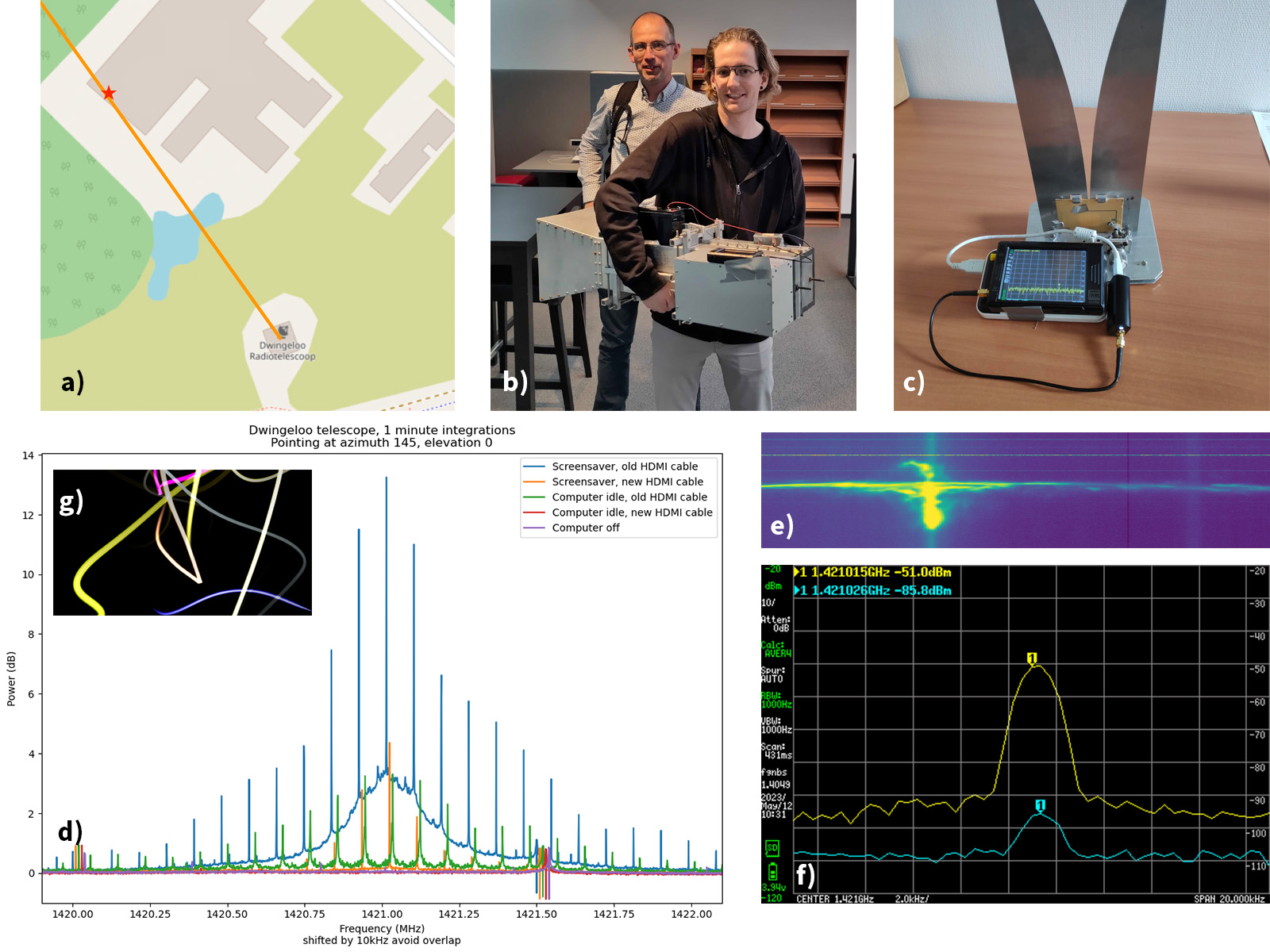Daily Image
18-05-2023Finding the interference at 1421.015 MHz
| Submitter: | Tammo Jan Dijkema |
| Description: | Lately, the Dwingeloo telescope observations of the hydrogen line have been disturbed by radio frequency interference (RFI) at a frequency of 1421.015 MHz (-129 km/s). This is a very awful frequency for RFI, since it is very close to the frequency of the hydrogen line. This frequency is in a protected radio astronomy band, while of course we are also in a radio quiet zone. So we had plenty of incentive to find and eliminate this source. The interfering signal was already visible in a previous daily image, also shown here in panel e, which shows measurements of the hydrogen line while the galactic center passes through the telescope beam. The RFI is visible as thin horizontal lines. During the latest CAMRAS club day, CAMRAS volunteers guided by Paul Boven found the direction of this interference: it was strongest when pointing towards the most western part of the ASTRON building (panel a). Knowing this, we started looking for the source of the RFI with a more portable device than the Dwingeloo telescope. We used a spare 23cm feed (panel b, very similar to the one in the focus of the Dwingeloo telescope. Attached to this is a spare LNA, and a tiny spectrum analyzer. We tested this 'portable' setup with a signal generator, but did not notice that the LNA was half broken: it did amplify strong signals, but not weak signals. So with this setup, we found nothing. We improved the RFI finding device by replacing the horn antenna by a smaller Vivaldi antenna. Also, we replaced the half-broken LNA (which is under repair now) with an off-the-shelf 1420 MHz LNA. With this much more portable setup (panel c), we almost immediately found the source of the RFI, marked with a star in panel a. The source of RFI is a computer. This gives some weak RFI all the time and a lot of RFI when starting up, shutting down, or showing the screensaver in panel g. Knowing the source of RFI, we went back to the non-portable setup: the Dwingeloo telescope. With that pointed at the office with the RFI-producing computer, we conducted various experiments with the computer. Eventually, we found out that replacing the HDMI monitor cable by another one, reduced the RFI by 9 dB. With this reduction, the computer does not produce noticeable RFI under normal usage. The screensaver still produces RFI, so we disabled it. While more experiments are possible (tuning the graphics card to various different frequencies, figuring out why other computers do not produce this RFI, etc.), we are happy that this source of RFI is now gone. Luckily, there are plans for more active spectrum monitoring in Dwingeloo, so in the future other sources or RFI can be found as soon as they are introduced. |
| Copyright: | CC-BY 4.0 Tammo Jan Dijkema |
| Tweet |  |
